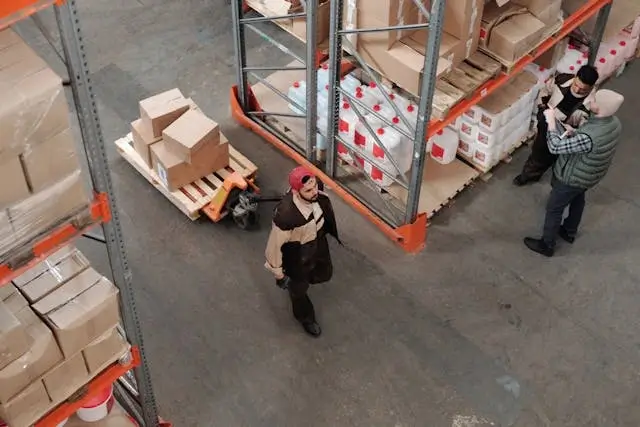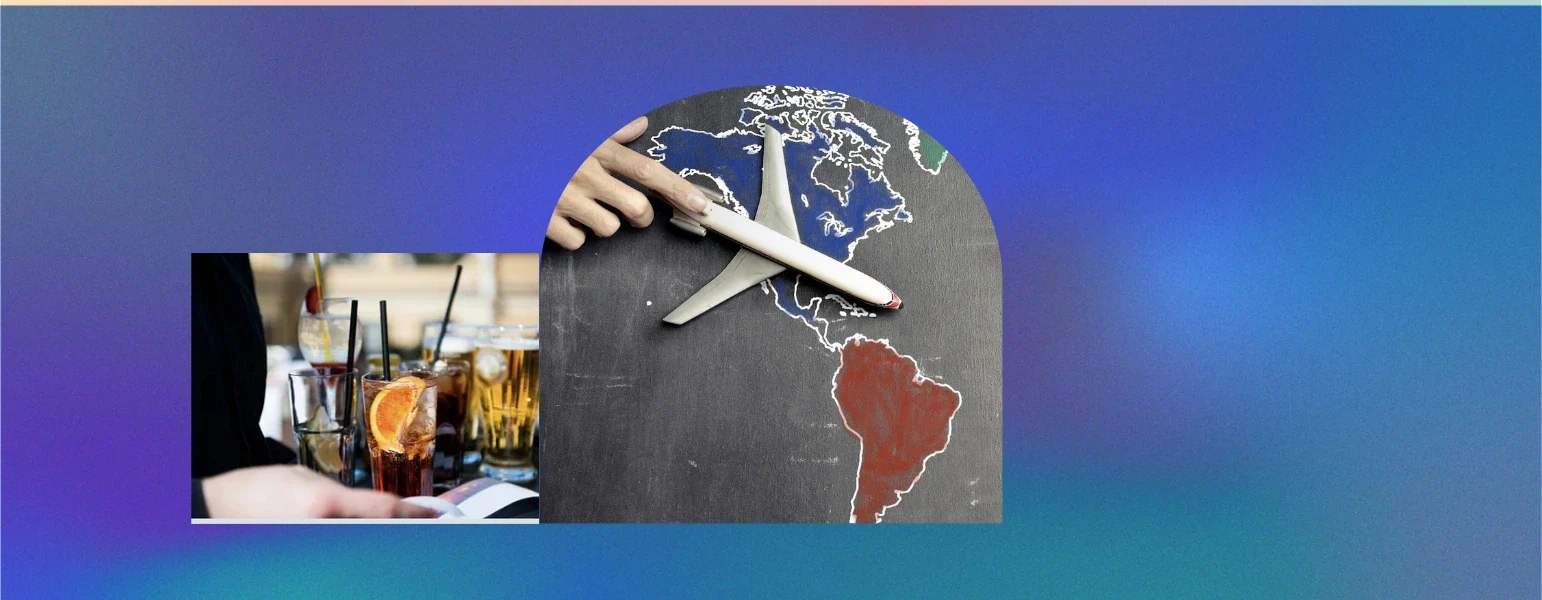

- BLOG
Multi-Stop Beverage Route Planning
Published: October 29, 2025
Route Optimization API
Optimize routing, task allocation and dispatch
Distance Matrix API
Calculate accurate ETAs, distances and directions
Directions API
Compute routes between two locations
Driver Assignment API
Assign the best driver for every order
Routing & Dispatch App
Plan optimized routes with 50+ Constraints
Product Demos
See NextBillion.ai APIs & SDKs In action
AI Route Optimization
Learns from Your Fleet’s Past Performance
Platform Overview
Learn about how Nextbillion.ai's platform is designed
Road Editor App
Private Routing Preferences For Custom Routing
On-Premise Deployments
Take Full Control of Your Maps and Routing
Trucking
Get regulation-compliant truck routes
Fleet Management
Solve fleet tracking, routing and navigation
Middle Mile Delivery
Optimized supply chain routes
Construction
Routes for Construction Material Delivery
Oil & Gas
Safe & Compliant Routing
Food & Beverage
Plan deliveries of refrigerated goods with regular shipments
Table of Contents

This article explores the key challenges and optimization strategies involved in planning and executing beverage delivery routes with multiple stops. It focuses on the complexities of frequent orders, diverse delivery profiles, temperature control, strict delivery windows, and urban congestion. The content highlights how advanced route optimization tools such as NextBillion.ai can address these challenges through real-time optimization, data-driven decision-making, and hybrid routing models. Intended for logistics managers, operations teams, and supply chain professionals in the food and beverage sector, this article provides actionable insights to improve delivery efficiency, reduce costs, and enhance customer satisfaction.
Efficient delivery logistics are the backbone of today’s beverage distribution industry. Whether a company handles craft beer, soft drinks, bottled water, or wine, the ability to deliver products on time across dozens of client locations daily can directly influence profit margins, customer satisfaction, and competitive advantage. However, orchestrating multi-stop delivery routes is far from simple. It requires precise coordination between drivers, dispatchers, vehicles, and customers. This article provides a comprehensive technical exploration of multi-stop beverage route planning from the underlying logistics challenges it addresses, to the algorithms and technologies driving optimization today. It also reviews industry best practices and the role of modern route optimization software in achieving scalable, data-driven distribution efficiency.

Multi-stop route planning in the beverage sector refers to creating an efficient delivery path for vehicles that need to service multiple customers or destinations in a single trip. Instead of repeatedly returning to the depot, trucks deliver to multiple retailers, restaurants, or other clients on one route, minimizing total distance and time.
For beverage distributors, this process involves not just planning routes but also aligning operational factors such as:
Multi-stop planning is essentially the operational translation of the Vehicle Routing Problem (VRP), which is a complex optimization challenge where multiple vehicles must visit many destinations under real-world constraints. Advanced route optimization engines solve VRP-like problems at scale using AI and heuristic methods, drastically improving over manual or spreadsheet-based planning systems.
The beverage distribution industry poses unique post-manufacturing delivery challenges such as:
Unlike parcel logistics, beverage distributors typically serve a semi-fixed client base but must accommodate fluctuating order sizes and delivery windows. Hence, adaptive planning becomes essential to ensure high service levels while minimizing distance traveled and hours worked.
Route planning can be done in two ways – Manual and Automated.
Traditionally, beverage route planning was manual by using maps, whiteboards, or spreadsheets to arrange stops by intuition or geography. While feasible for a few deliveries, manual planning quickly fails to scale. Common drawbacks include:

Modern route planning tools automate this process. They use data and algorithms to dynamically assign and sequence stops based on dozens of parameters.
The advantages include:
As Wise Systems points out, dynamic planners leverage machine learning to refine route efficiency continuously. Over time, the software “learns” patterns in traffic, order behavior, and stop durations to provide self-improving route guidance.
A sophisticated beverage route planning system handles multiple datasets simultaneously. Here’s what goes into building an optimized delivery route:
To generate meaningful routes, the planner considers:
Most multi-stop planners use variants of:
GPS-enabled tracking provides fleet managers with live feeds of driver location, stop progress, and estimated time of arrival (ETA). Intelligent dispatch systems flag anomalies (delays, missed stops) and reroute in real time.
Before planning a multi-stop beverage route, you must do the following steps:
These steps, when managed digitally, reduce planning time from hours to minutes and dramatically improve fleet utilization.
The following are few optimization factors for beverage fleets:
Many beverage vehicles have multiple compartments to store diverse SKUs (e.g., kegs, bottles, cans). Efficient route design should align loading patterns with stop order, preventing unnecessary unloading or product damage.
Retailers’ time windows require planners to sequence routes precisely. A late or early delivery can disrupt store operations and lead to penalties.
In the U.S., driver duty periods are governed by FMCSA Hours of Service (HOS) rules. Route optimizers must ensure compliance to avoid violations.
Weather, construction, or traffic congestion can alter viability mid-route. AI-powered planners optimise in real time to maintain efficiency and customer satisfaction.
Systems like FarEye and Wise Systems provide intelligent route optimization that dynamically adjusts based on operational data. They automate allocation, consider over 100 constraints, and provide dispatchers real-time oversight.
Key features include:
Modern route planners integrate with ERPs like SAP, OMS, and telematics platforms to synchronize business data flows. Integration ensures seamless coordination between order entry, route planning, dispatch, and billing.
Driver interfaces now include digital route manifests, barcode scanning, and electronic proof of delivery (ePOD). These reduce paper usage and ensure instant visibility.
Machine learning helps forecast workload peaks, optimal delivery times, and probable route bottlenecks based on historical data.
Cloud-based systems like Wise Systems’ and Portatour enable continuous updates, scalability, and accessibility across fleet sizes that are essential for distributed networks.
To assess the value of a route optimization system, beverage companies track KPIs such as:
With early trials of autonomous delivery vehicles underway, beverage logistics may soon see partial automation for middle-mile routes, followed by limited last-mile adoption.
Many U.S. distributors are investing in carbon footprint reduction. Green routing algorithms minimize idling and choose energy-efficient paths, while electric vehicle (EV) routing engines consider battery charge and charger availability.
Predictive analytics will help balance daily load volumes to reduce overtime and eliminate underutilized capacity.
IoT-enabled warehouses and dynamic restocking alerts will trigger optimized delivery sequence generation based on actual demand rather than preset schedules.
Here are some of the strategies that distributors from the U.S can consider:
NextBillion.ai empowers beverage distributors to plan and execute highly efficient multi-stop delivery routes with precision and scalability. Its advanced Route Optimization API considers delivery time windows, vehicle capacity, driver shifts, and real-world traffic conditions to generate cost-effective routes that reduce travel time and fuel consumption.
Beverage logistics face unique constraints such as fragile goods, varied container sizes, temperature requirements, narrow delivery windows, and regulatory compliance (HOS). NextBillion.ai’s APIs address these pain points by integrating real-time optimization directly into route planning workflows, enabling companies to transition from static route maps to dynamic, data-driven scheduling systems.
Through Route Optimization API, beverage distributors reduce fuel usage, improve on-time delivery rates, and maintain cold-chain efficiency across urban and suburban routes.
In beverage planning, this API supports pre-route validation by verifying timing adherence before dispatch and thus reducing mid-route adjustments.
For example, when a driver enters a city-block geofence near a bar district, the system can notify each outlet’s manager with updated ETAs or dispatch alternate drivers for urgency-based deliveries.
NextBillion.ai supports multi-depot delivery network structures, enabling beverage companies with distributed warehouses or bottling centers to plan interlinked routes. Fleet tasks can be assigned to optimal depots, minimizing empty miles and balancing loads automatically through algorithmic depot allocation.
Industry Specificity:
Constraint Depth:
Custom Route Objectives:
Re-optimization API:
Integrations:
Data Security & Cloud:
Multi-stop beverage route planning represents the convergence of logistics science, operational precision, and customer experience. It demands an understanding of optimization, fleet dynamics, and technology adoption. For U.S. beverage distributors, success hinges on harnessing advanced algorithms and automation to minimize waste, maximize utilization, and ensure every delivery customer gets perfectly on-time service.
NextBillion.ai offers a robust end-to-end solution for multi-stop beverage route planning, tailored to the operational complexity of beverage logistics networks in the U.S. Through its Route Optimization API, Distance Matrix API, and supporting tools like Geofencing API, the platform enables distributors to automate, scale, and optimize every mile of their beverage delivery operations. It empowers planners to create efficient, real-time adaptive multi-stop delivery routes that reduce costs, honor delivery windows, ensure compliance, and maximize asset productivity across U.S. distribution networks.
By adopting NextBillion.ai, beverage firms can seamlessly modernize their logistics infrastructure, scaling from hundreds to thousands of deliveries per day with smart automation and consistent route performance.
👉 Book a demo with NextBillion.ai today and see firsthand how NextBillion.ai can help optimize your Multi-Stop Beverage Route Planning.
Prabhavathi is a technical writer based in India. She has diverse experience in documentation, spanning more than 10 years with the ability to transform complex concepts into clear, concise, and user-friendly documentation.